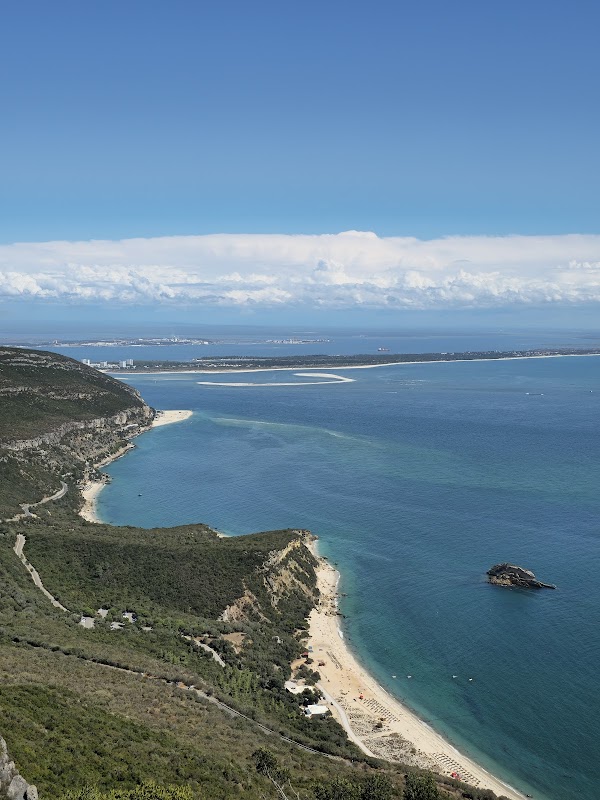
Festa de São Sebastião in Setúbal: A Vibrant Blend of Tradition and Adventure
Festa de São Sebastião in Setúbal combines centuries-old cultural tradition with outdoor adventure in a vibrant coastal city. Explore the festive processions, local flavors, and nearby trails that offer both challenge and sweeping natural beauty.
Wear Grip-Soled Footwear
The trail transitions from slippery cobblestones in the city to loose soil on forest paths, requiring shoes that balance traction and comfort.
Stay Hydrated in Winter Sun
January weather can be cool at dawn but warm up quickly—carry water to stay energized during your hike and festival exploration.
Dress in Layers
Temperatures can shift significantly throughout the day; layering helps you manage cool mornings and warmer afternoons comfortably.
Plan for Limited Night Transport
Festival nights are lively but public transport options reduce after hours—consider arranging local rides or walking safely with companions.
Festa de São Sebastião in Setúbal: A Vibrant Blend of Tradition and Adventure
Setúbal wakes each January to the pulse of Festa de São Sebastião, a centuries-old festival celebrating the patron saint of this energetic coastal city. The streets narrow and sway under streams of locals and visitors drawn to its blend of solemn procession and spirited revelry. While the festival itself centers around vibrant parades, bonfires, and heartfelt prayer, it also invites you outdoors—where the city’s rugged natural environment challenges and rewards adventurers.
The festival’s heart beats strongest on January 19th, when São Sebastião’s image leads a procession through Setúbal’s historic center, past the sea-scented air heavy with incense and roasting chestnuts. This is an event of communal connection, where tradition tangibly meets the salt breeze and ocean’s roar. It’s a moment to engage deeply, whether watching the ceremonial dances or joining locals in folk songs and spontaneous celebrations.
For those ready to complement cultural immersion with outdoor activity, Setúbal offers immediate access to trails that push alongside the Sado River, cutting through stone and woodland, and onto panoramic lookouts over the Atlantic. The hike from the city to the Arrábida Natural Park’s edges spans roughly 8 kilometers one way, presenting an elevation gain near 300 meters that tests stamina without overwriting pleasure. The terrain shifts between cobbled city streets and earthy paths guarded by cork oaks and wild olive trees, which stretch their branches as if pointing toward distant horizons.
Timing your hike during or around Festa de São Sebastião immerses you in a dual experience—where cultural tradition and raw nature meet. Pack steady hiking shoes resistant to both cobblestones and loose soil. Stay hydrated: January in Setúbal can bring cool mornings but brisk afternoons with sun that demands respect. A layered jacket helps manage the transition from chilly dawn to sunlit midday. Along the trails, the river dares you on one side while the hills push upward, challenging any complacency.
The festival also showcases local culinary flavors—don’t miss the chance to try fresh fish dishes at nearby markets or restorative treats like roasted chestnuts. Post-hike, the Festa’s nighttime bonfires glow fiercely, a warm reward after a day of engagement with land and legacy.
Whether you come specifically for Festa de São Sebastião or arrive ready to explore Setúbal’s natural arms, this city is fiercely itself—vibrant, welcoming, and insistently alive beneath winter skies. It offers a blend of urban and wild that both grounds and elevates, perfect for adventurers who value experience with layers of meaning.
Nearby Trips
All Adventures
Boat Charters
Water Activities
Adventures near Setúbal, Portugal
Discover the unique and memorable adventures that make Setúbal, Portugal special.
Frequently Asked Questions
When exactly is Festa de São Sebastião held in Setúbal?
The festival runs throughout January, with the main day celebrated on January 19th, featuring the procession and citywide festivities.
Are there any unique local traditions tied to São Sebastião's festival?
Yes, the procession includes carrying the saint's statue through Setúbal’s streets, followed by communal bonfires where locals share folk songs and roasted chestnuts.
Is it possible to hike near Setúbal during the festival?
Absolutely. Trails near the city, including those leading to Arrábida Natural Park, are accessible and provide a rewarding outdoor experience alongside cultural activities.
What wildlife might I encounter on nearby trails?
Expect to see native species like Iberian hares, wild rabbits, and a variety of birds including Eurasian blue tits and goldfinches, especially in forested areas.
Can I find traditional food related to the festival locally?
Yes, local markets and eateries offer specialties including grilled fish, chorizo, and roasted chestnuts, which are central to the festival experience.
Are there any environmental considerations during the festival?
Visitors are encouraged to respect fire safety around bonfires and manage waste responsibly, helping keep Setúbal’s streets and natural areas clean and safe.
Recommended Gear
Waterproof Hiking Shoes
Protects feet through wet cobblestones and uneven wooded paths, enhancing grip and stability.
Layered Clothing
Adjustable layers help maintain comfort amid Setúbal's cool mornings and warm afternoons.
Reusable Water Bottle
Essential to stay hydrated throughout the festival days and hikes, especially with variable winter sun exposure.
Compact Rain Jacket
Helpful in managing sudden January showers, protecting both you and your gear from damp conditions.
Local Insights
Hidden Gems
- "Miradouro de São Filipe castle walls offer dramatic views over Setúbal and the Sado estuary not widely known to visitors."
- "Small fishing coves like Praia da Saúde offer quiet spots away from festival crowds."
Wildlife
- "Kingfishers dart along the Sado River edges, their bright plumage a vivid contrast against the water."
- "Mediterranean tortoises can sometimes be spotted sunning on warm rocks in the surrounding natural parks."
History
"Festa de São Sebastião has roots dating back to the 16th century, originally a plea for protection against plagues and now a vital part of Setúbal’s communal identity."
